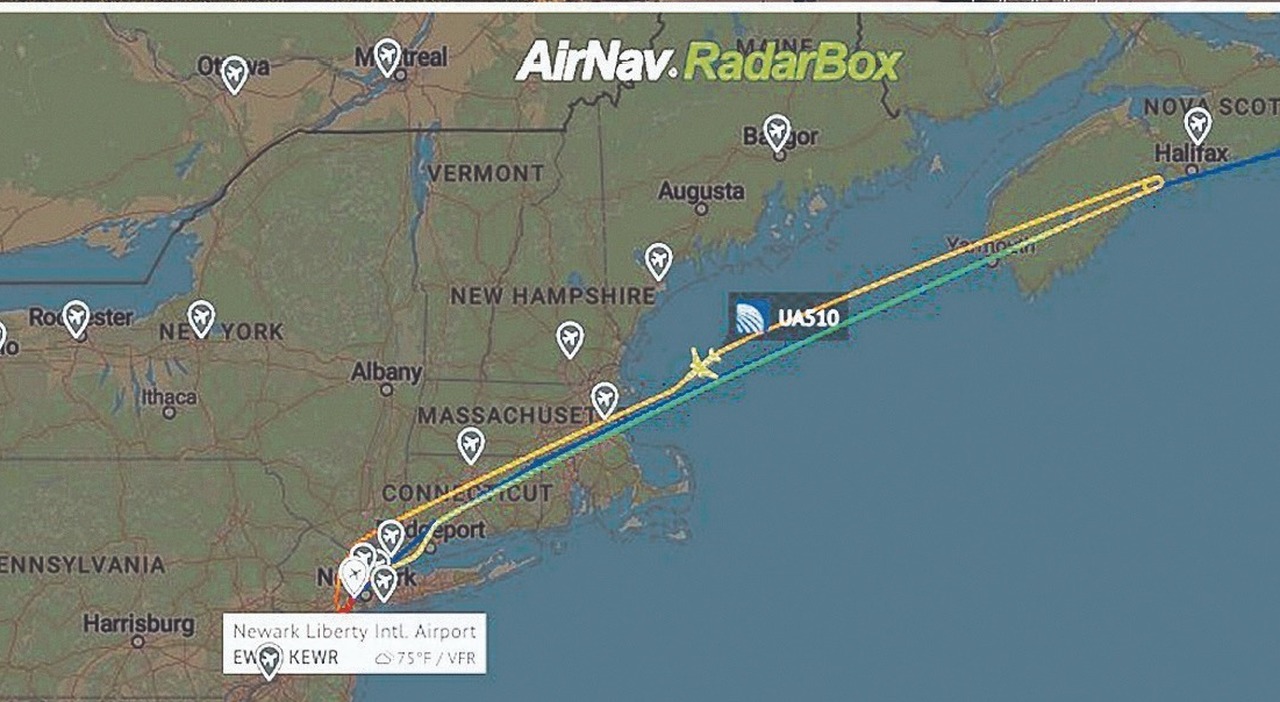“With the eye, the passengers, those who were not sleeping, because it was also night, felt the dramatic turn to reverse more than the descent, which had already occurred at a very ‘gentle’ rate,” says Gianni Lanza, 60. An old Romanian, former Airbus 320 pilot and flight instructor. The United Airlines Boeing 777-200, flying from Newark to Fiumicino, dropped from about 37,000 feet (11,000 meters) to nearly 9,000 feet (2,700 meters) in 8 minutes according to some versions, and in 10 according to others. “Let’s also consider 8 minutes: it’s just over 3,500 feet per minute, a slight descent that indicates that everything on board was under control except for that alleged malfunction in the cabin pressure system.”
a light?
“Let’s assume a long slide with minimal throttle and airbrake out. For the descent to become a little steeper, you have to lose at least 5 or 6 thousand feet per minute, and panic certainly does not spread among the passengers. But in emergency situations, this model can accelerate faster without problems. Well, if anything, those who were awake will wonder why after that turn the plane descended instead of settling at a cruising altitude of about 12 kilometers above sea level. But at this point the captain had already informed the passengers of the change of plan. “You can imagine their disappointment.”
Emergency masks did not arrive on flight UA510, at least that is what the company announced, without passengers disagreeing with it.
“An indication that although it was not working properly, the compression system maintained acceptable pressure in the cabin by continuing to pump out the air sucked in by the engines. “The pilot had indicators telling him exactly what the situation was and so he decided as a precaution that it was best to cut short the transatlantic flight and return to Newark.”
However, was it necessary to lose altitude and possibly dump some fuel given that the tanks were still almost full 49 minutes into the flight?
“Yes, it is safe to assume that one of the valves in the system was not working properly. It is clear that at 11,000 meters above sea level it is not possible to survive without a pressure system that keeps the cabin position similar to that at 3,000 meters above sea level.
What if this system crashes?
“If the fault is really serious and there is a sudden loss of pressure, the masks come down automatically. Action that can also be controlled by the pilot. From that moment on, the autonomy of the system that allows passengers to survive at high altitudes allows the pilot to descend calmly to 3,000 metres, an altitude at which there is no need for breathing assistance.”
United says there was no loss of cabin pressure.
“There will be instrument records as evidence, but this landing, which was a little sharper than a standard landing, which causes the plane to bank by 3 degrees, attests that everything was under control. But clearly indicators associated with the pressure system indicated that something was not going well and the pilot was right to be cautious. During his return to Newark he must have been constantly monitoring the delta (difference) between the internal pressure (in the cabin, editor) and the external pressure. It must also be taken into account that these systems are “redundant”, that is, the “vital” parts are double and even “triple” because if one of them fails there is at least another to take its place.”
Is this a recurring malfunction?
“I would say no, these are rare conditions on today’s aircraft, and above all they can be encountered without consequences for passengers. Moreover, the plane was above the sea, so getting off was not difficult. It’s different if you cross the Alps and descend about 3,000 metres, you have to “throw” your nose towards Monaco or towards the Po Valley. “And then you may have to go down even if the pressure system is working fine.”
when?
“It occurs when you lose all or part of the engine power. Quadcopters are a large minority, so in twin-engine aircraft at that point, you’re only left with one engine that provides the thrust needed to fly as safely as possible, but the pressurization system must also operate on its own. So, as a general rule, we come down to altitude anyway.”
Read the full article
On Il Messaggero

“Infuriatingly humble social media buff. Twitter advocate. Writer. Internet nerd.”


